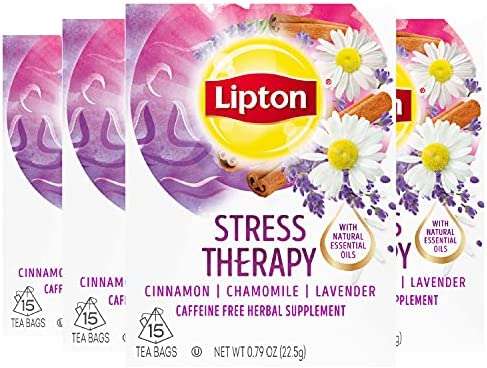Colour therapy is a complementary therapy and not an alternative to medical care. The results of the therapy vary from person to person.
What does colour therapy do?
Colour therapy is a non-invasive and holistic treatment that brings balance and health to your mind and body. The vibrations of the colour in colour therapy class improve your mood and overall health.
The basic idea of colour therapy
Colours are made up of reflected lights that hit our retinas as the wavelengths vibrate. Our brain interprets these wavelengths, which ultimately makes our perception of colour as a physical and sensory experience.
Colour therapy is based on the idea that colours create an electrical impulse in our brain, which stimulates hormonal and biochemical processes in our body. These processes either stimulate or calm us.
How to get started with colour therapy
There are as many colours in colour therapy sessions as there are colours in the rainbow. As you start with your colour therapy session, your therapist will give you an analysis of all colours and ask you about the aspects of life in which you think these colours can improve.
Many salons combine colour and aromatherapy. In some salons, you might even get a massage with different colours of light being projected on your body to stimulate health and healing. Many spas also offer treatment in which they place different colours of silk on different points of your body, which are said to control your mood and emotional well-being.
Different colours treat different ailments
The shades of colours used in your colour therapy session will vary depending upon the type of ailment you are trying to correct. For example, blue or purple lights are anti-inflammatory and calming. Green colour helps to purify and cleanse, white and yellow colour light stimulates the lymphatic system. Red light is invigorating but it may cause agitation if you are already tense.
According to Indian philosophy, the chakras are considered the centres of spiritual power and energy within our bodies. There are seven chakras and different colours represent a different chakra:
– Red colour: The root chakra located at the base of the spine is represented by red colour. The chakra has to do with our connection with the Earth.
– Orange colour: The Sacral Chakra, which is located 2 or 3 inches below the navel is represented by orange colour. This chakra is said to be associated with reproduction, kidneys, adrenals and pleasure. The chakra is the mind-body chakra.
– Yellow colour: The solar plexus chakra is associated with liver, pancreas, digestive system, gallbladder, empowerment and well-being. The chakra is located between the navel and sternum.
– Green colour: The colour represents the Heart Chakra. It’s associated with heart, lungs and immune system, energy, nervous system, mental focus, compassion and empowerment.
– Blue colour: The chakra is associated with thyroid and metabolism and also with a peaceful expression.
– Indigo colour: The third eye chakra is located between the eyebrows. It is associated with the pituitary gland and pineal gland. It influences our sleep cycle, clarity, wisdom, self-esteem and intuition.
– Violet colour: It is associated with the Crown Chakra and is located at the top of the head. It is associated with clarity, dreams, spirituality, sleep cycles, dreams, pineal gland and light sensitivity.
Colour therapy, also called chromotherapy, is a method of treating ailments by using colours. The therapy is done by shining an appropriate colour on the particular area of the body. It is also done through eyes by looking at a particular colour. Though this is performed with utmost care so that there is no strain on the eyes.Colour therapy is a complementary therapy and not an alternative to medical care. The results of the therapy vary from person to person.Colour therapy is a non-invasive and holistic treatment that brings balance and health to your mind and body. The vibrations of the colour in colour therapy class improve your mood and overall health.Colours are made up of reflected lights that hit our retinas as the wavelengths vibrate. Our brain interprets these wavelengths, which ultimately makes our perception of colour as a physical and sensory experience.Colour therapy is based on the idea that colours create an electrical impulse in our brain, which stimulates hormonal and biochemical processes in our body. These processes either stimulate or calm us.There are as many colours in colour therapy sessions as there are colours in the rainbow. As you start with your colour therapy session, your therapist will give you an analysis of all colours and ask you about the aspects of life in which you think these colours can improve.Many salons combine colour and aromatherapy. In some salons, you might even get a massage with different colours of light being projected on your body to stimulate health and healing. Many spas also offer treatment in which they place different colours of silk on different points of your body, which are said to control your mood and emotional well-being.The shades of colours used in your colour therapy session will vary depending upon the type of ailment you are trying to correct. For example, blue or purple lights are anti-inflammatory and calming. Green colour helps to purify and cleanse, white and yellow colour light stimulates the lymphatic system. Red light is invigorating but it may cause agitation if you are already tense.According to Indian philosophy, the chakras are considered the centres of spiritual power and energy within our bodies. There are seven chakras and different colours represent a different chakra:The root chakra located at the base of the spine is represented by red colour. The chakra has to do with our connection with the Earth.The Sacral Chakra, which is located 2 or 3 inches below the navel is represented by orange colour. This chakra is said to be associated with reproduction, kidneys, adrenals and pleasure. The chakra is the mind-body chakra.The solar plexus chakra is associated with liver, pancreas, digestive system, gallbladder, empowerment and well-being. The chakra is located between the navel and sternum.The colour represents the Heart Chakra. It’s associated with heart, lungs and immune system, energy, nervous system, mental focus, compassion and empowerment.The chakra is associated with thyroid and metabolism and also with a peaceful expression.The third eye chakra is located between the eyebrows. It is associated with the pituitary gland and pineal gland. It influences our sleep cycle, clarity, wisdom, self-esteem and intuition.It is associated with the Crown Chakra and is located at the top of the head. It is associated with clarity, dreams, spirituality, sleep cycles, dreams, pineal gland and light sensitivity.
What Is Color Therapy?
Color therapy, also known as chromotherapy, is a form of therapy that uses color and light to treat certain mental and physical health conditions.
We can trace this form of therapy back to the ancient Egyptians. They made use of sun-filled rooms with colored glasses for therapeutic purposes.
Although color therapy has gained some popularity over the years, it’s still not a widely accepted form of therapy in Western medicine. Many medical experts consider it to be pseudoscience or quackery.
While color psychology is the study of how different colors can influence human behavior and perception, color therapy is different. It is based upon the unproven assumption that certain colors can impact people’s “energy” and impact health outcomes.
At some point, we’ve all experienced the ways in which color can affect us. For some people, seeing the green in nature on their daily run is an instant mood booster or they instantly feel a little better wearing a favorite yellow dress. The practice of color therapy can be traced to Indian ayurvedic medicine, which claims that the application of certain colors can correct imbalances in our body’s chakras.
Types of Color Therapy
In color therapy, it is believed that different colors are able to impact the body differently.
- Red: Red is used to energize or invigorate a person who might be feeling tired or down. However, red may also trigger people who might already be tense.
- Blue: Chromatherapists use blue to try and influence depression and pain. Darker shades of blue are also thought to have sedative properties and may be tried for people who experience insomnia or other sleeping disorders.
- Green: Green is the color of nature, and according to chromatherapists, it can help relieve stress and relax a person.
- Yellow: Yellow can be used to improve your mood and make you more happy and optimistic.
- Orange: Orange, much like yellow, can be used to elicit happy emotions from people. The bright warm color is also thought to be able to stimulate appetite and mental activity.
Techniques of Color Therapy
There are two major techniques of color therapy. It can either be done through sight, that is, by looking at a particular color in hopes that it elicits the desired response in your body, or by directly reflecting certain colors on parts of the body.
Color therapists believe that color can enter our bodies either through our eyes or skin. Each color we can see has its wavelength and unique frequency. Each unique frequency has a different effect on people and is used for different purposes. Warm colors are typically used for stimulating effects, while cool colors are used for calming effects.
What Color Therapy Can Help With
Chromotherapy is considered a type of alternative medicine treatment. It has been purported to help with a variety of conditions, including:
- Stress
- Depression
- Aggression
- High blood pressure
- Sleep disorders
- Anxiety
- Certain cancers
- Skin infections
It is important to note that there is no significant evidence that color therapy is effective for any medical condition. According to the American Cancer Society, available scientific evidence does not support any claims that use of light or color therapy are effective in treating cancer or any other illnesses.
There is currently no research to support that color therapy can solely be used as an effective treatment for any of these conditions.
Benefits of Color Therapy
Over the decades, color therapy has been purported to provide several benefits ranging from physical to mental, including:
- Stress relief: Certain colors like blue and green are thought to have soothing effects on people who are stressed or anxious.
- Boost your appetite: Warm and stimulating colors are thought to boost your appetite when you struggle with having a desire for food.
- Seasonal affective disorder: People mainly suffer from seasonal affective disorder during colder weather because of the lack of sunlight. Certain types of bright light therapy have been shown to be of benefit for this mood disorder. Color therapy also suggests the unproven idea that warm colors like yellow and orange could also help with this.
- To boost your energy: Colors such as red and yellow are believed to boost your energy and make you more motivated.
The Best Online Therapy Programs
We’ve tried, tested and written unbiased reviews of the best online therapy programs including Talkspace, Betterhelp, and Regain.
Things to Consider
While the premise of color therapy is that certain colors elicit specific emotions from most people, this isn’t always the case. Human beings are unique. The effects of certain colors on people may range from person to person. Colors most people might find calming or soothing might be anxiety-inducing or depressing to others.
How to Get Started
While the science behind color therapy is still largely unsubstantiated, it’s completely harmless to practice certain aspects of color therapy on your own. Here are some ways you can get started with experimenting with color therapy:
- Get rid of blue lights at nighttime for better sleep. Research has shown that the blue light in your laptops, phones, and televisions can affect your circadian rhythm, which affects your sleep quality. Wearing anti-blue light glasses or turning the settings on your gadgets to warmer yellow tones has been found to help.
- Bask in nature. The greens of leaves and grass we get in abundance in nature can positively relax us.
- Be intentional about color choices. When picking colors for anything, from the color of the walls in your room to the color of clothes you wear, choose colors that you find stimulating or elicit positive emotions.
It’s important to reiterate that color therapy doesn’t serve as a definitive treatment for any mental or physical health conditions. If you are experiencing a condition such as depression, it’s important to speak to your doctor about it.



